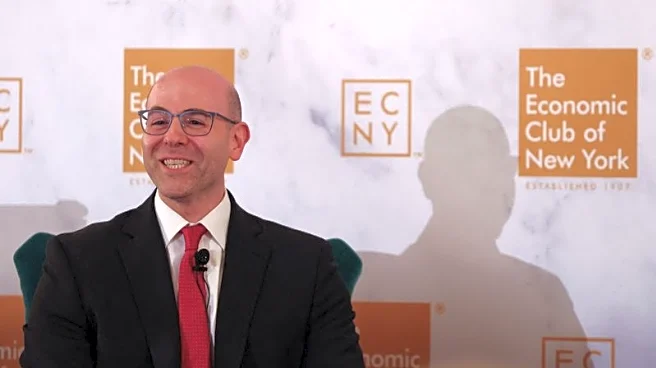What's Happening?
Federal Reserve Bank of New York President John Williams has expressed support for additional interest rate cuts this year due to concerns over a potential slowdown in the labor market. In an interview with the New York Times, Williams emphasized the importance of balancing inflation control with the need to prevent a sharp decline in employment. The Federal Reserve had already reduced its rate by a quarter percentage point in September, a move aimed at maintaining economic stability while addressing inflation concerns. The minutes from the September 16-17 meeting revealed a consensus among Fed officials that the risks to the U.S. job market warranted the rate cut, although there was caution regarding inflation. The next policy meeting is scheduled for October 28-29, with financial markets anticipating another rate cut.
Why It's Important?
The decision to potentially lower interest rates further is significant as it reflects the Federal Reserve's strategy to support the U.S. economy amid mixed signals from the labor market and inflation. Lower rates could stimulate economic activity by making borrowing cheaper, which may help counteract any slowdown in job growth. However, there is a delicate balance to maintain, as excessive rate cuts could lead to higher inflation, undermining economic stability. The Fed's actions are closely watched by investors, businesses, and policymakers, as they have far-reaching implications for economic growth, employment, and inflation.
What's Next?
The upcoming Federal Reserve policy meeting at the end of October will be crucial in determining the direction of interest rates. Stakeholders, including businesses and financial markets, will be keenly observing the Fed's decision and any accompanying statements for insights into future monetary policy. Additionally, the ongoing debate about the impact of President Trump's tariffs and the potential for a federal shutdown affecting economic data releases adds layers of complexity to the Fed's decision-making process.











